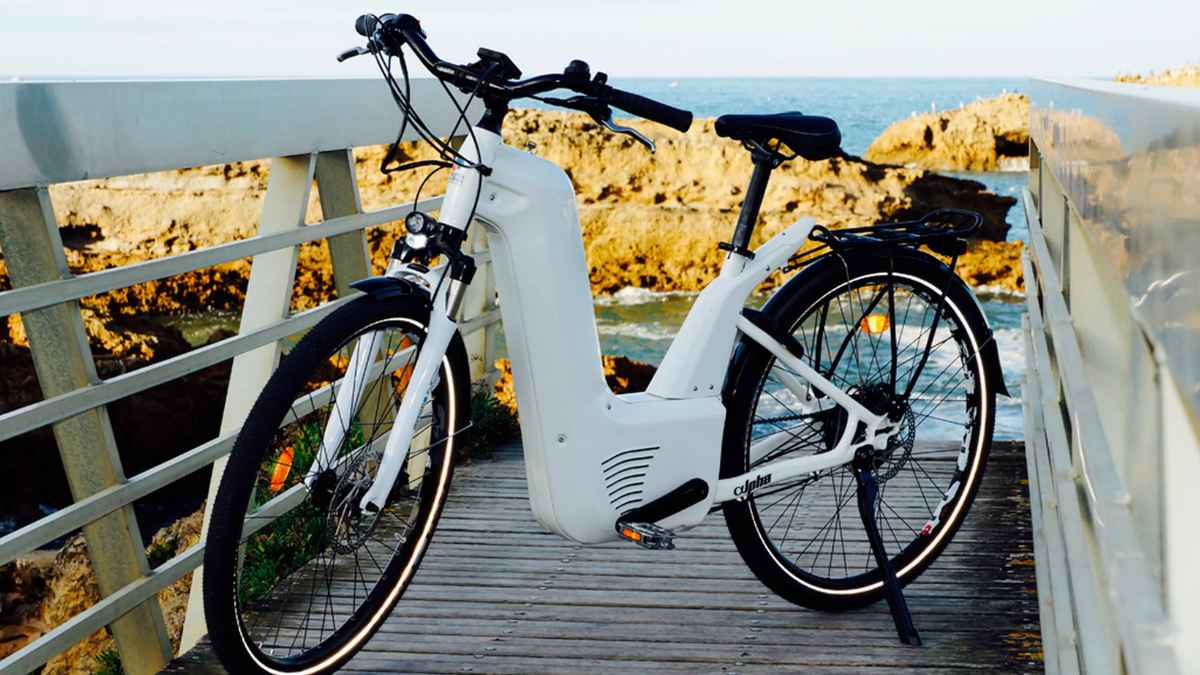With several U.S. transit systems labeling e‑bikes a fire risk, riders are looking for a safer, greener option. Enter the Boon H2, a hydrogen‑fuel‑cell bicycle from Irish start‑up HubUR that aims to rewrite urban mobility.
The compact cycle swaps bulky lithium batteries for a removable 20‑gram hydrogen cartridge, giving roughly 31 miles of assist per tank and eliminating long recharge waits. Commuters, delivery couriers and weekend explorers could all benefit—especially in big cities where plug‑in access is limited.
Why the boon h2’s hydrogen cartridge could solve e‑bike charging headaches in cities
Charging an electric bike after work can mean hunting for an outlet or tripping over cords in small apartments. The Boon H2 avoids that pain. Riders pop in a fresh low‑pressure cartridge and roll away in seconds. Worried about running out? Carry a spare; each cylinder weighs less than a water bottle.
| Feature | Hydrogen cartridge | Typical lithium pack |
|---|---|---|
| Swap time | Under 30 sec | 2–4 hr recharge |
| Weight | ≈ 0.7 oz | 5–8 lb |
| End‑of‑life | Refillable | Often landfilled |
As the table shows, hydrogen tackles downtime and disposal. Who wouldn’t trade a four‑hour wait for a 30‑second swap?
How hubur designed home hydrogen production to keep riders independent from power grids
Freedom from public chargers matters when storms knock out power or rates spike. HubUR bundles a countertop electrolyzer that turns tap water and household electricity into fresh fuel overnight. Riders in, say, Phoenix or Portland can refill at home without hunting for a public hydrogen pump. After all, why queue when you can brew your own energy?
The unit operates at low pressure, so storage remains safe even in small apartments. And because the cartridge is sealed, there’s no hydrogen odor or fire hazard. Price, weight, range and other specs riders should weigh before switching to hydrogen bikes. What are the price, weight, range, and other specifications that cyclists should consider before switching to hydrogen bikes?
- Range: ~31 miles per cartridge; two ports allow 62 miles total.
- Weight: 55 lb with 26‑inch wheels and Shimano Tourney gearing.
- Display: handlebar LCD shows speed, remaining hydrogen and assist level.
- Price: €6,000 (about $6,500).
Yes, the sticker shocks, yet the ability to “make” your own fuel could trim monthly costs, especially for daily riders who already shell out for charging or transit passes. So, is the premium justified? That depends on your commute length, electricity rates and appetite for early‑adopter tech.
Hydrogen won’t dethrone electric bikes overnight, but HubUR’s Boon H2 proves alternatives are ready to roll. Faster turnarounds, lighter fuel and grid independence might be exactly what urban cyclists need as safety rules tighten around lithium packs.

